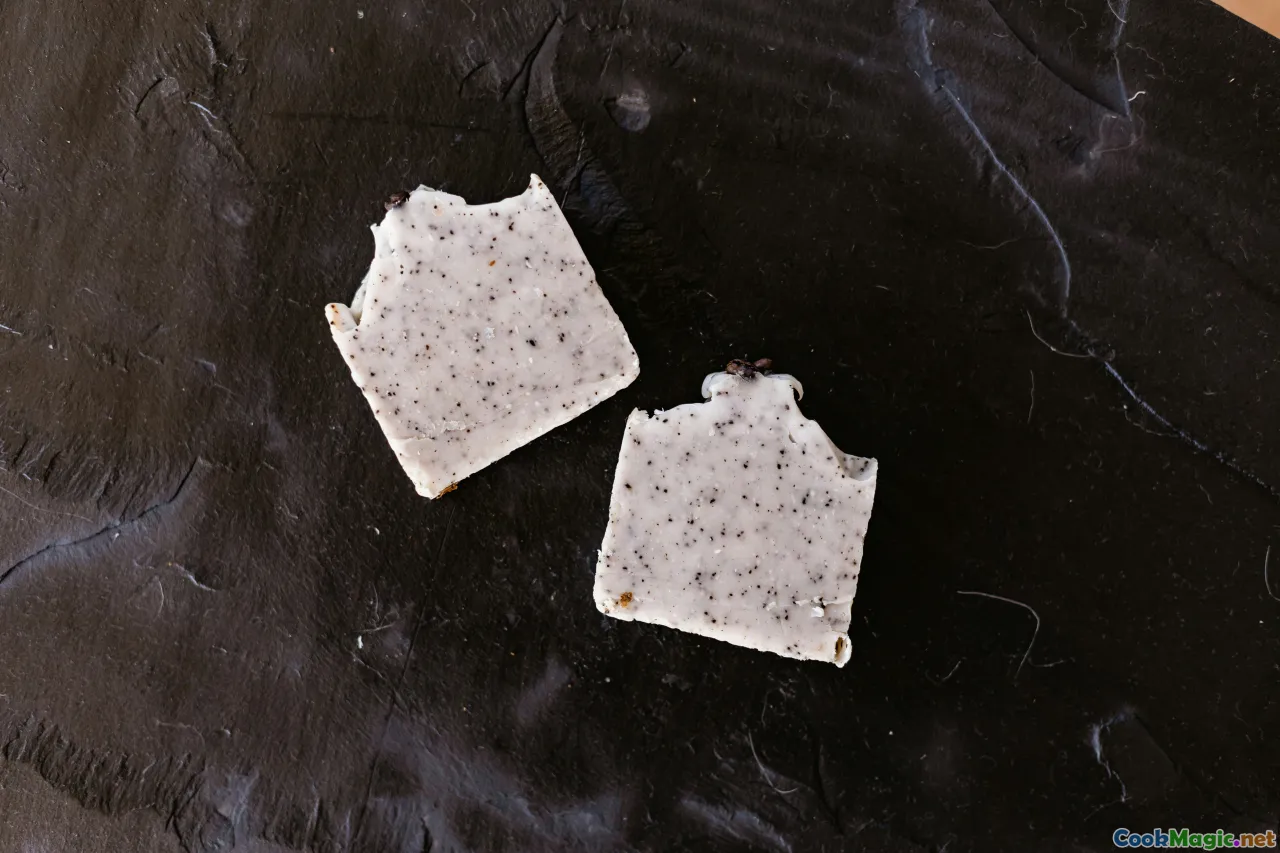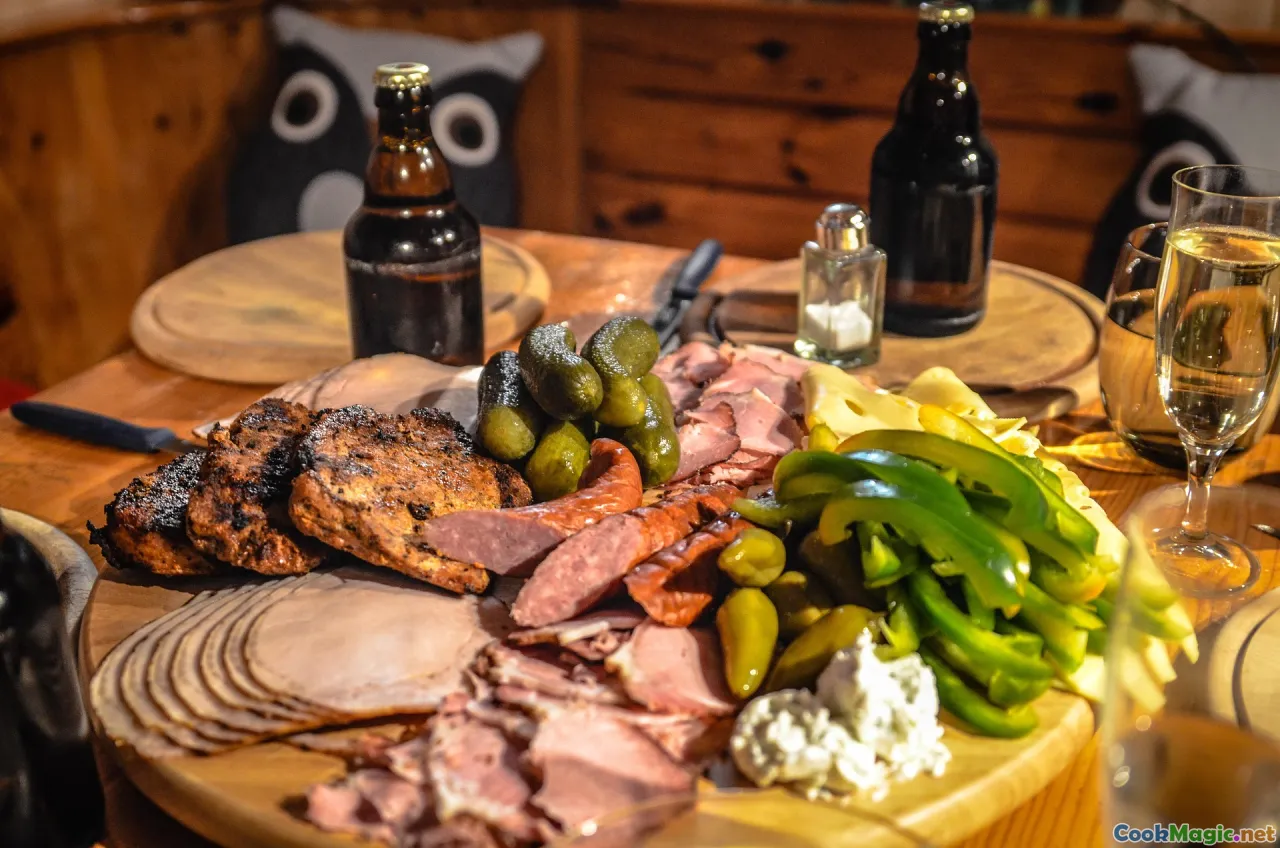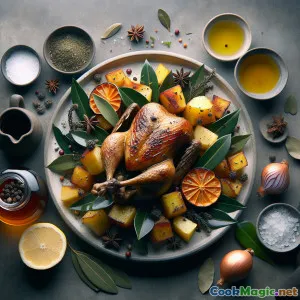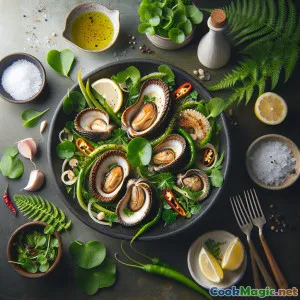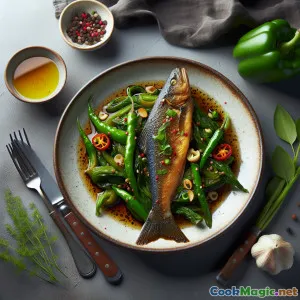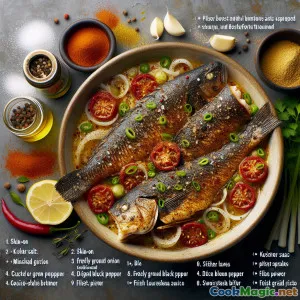
Smoky Harakeke Whitebait Fritters with Lemon Aioli
(0 Reviews)0
3,137
August 25, 2025
Report a Problem
Ingredients
-
300 grams Fresh whitebait
(Preferably locally sourced)
-
50 grams Harakeke shoots (New Zealand flax)
(Young, tender shoots only; finely chopped)
-
2 cups Wood chips for smoking (manuka preferred)
(For smoking the whitebait)
-
3 large Eggs
(Free-range for best flavor)
-
30 grams Rice flour
(Gluten-free option)
-
15 grams Cornflour
(Adds crispiness)
-
1 medium Spring onion
(Finely sliced)
-
0.5 teaspoon Salt
-
0.25 teaspoon Black pepper
(Freshly ground)
-
1 teaspoon Lemon zest
(Untreated lemon)
-
4 tablespoons sunflower oil
(For shallow frying)
Lemon wedges, to serve
-
4 tablespoons Homemade lemon aioli
(For serving; see instructions below)
(Preferably locally sourced)
(Young, tender shoots only; finely chopped)
(For smoking the whitebait)
(Free-range for best flavor)
(Gluten-free option)
(Adds crispiness)
(Finely sliced)
(Freshly ground)
(Untreated lemon)
(For shallow frying)
(For serving; see instructions below)
Nutrition
- Servings: 4
- Serving Size: 2 fritters (about 120g)
- Calories: 275 kcal
- Carbohydrates: 14 g
- Protein: 20 g
- Fat: 14 g
- Fiber: 1.5 g
- Sugar: 1 g
- Sodium: 440 mg
- Cholesterol: 195 mg
- Calcium: 92 mg
- Iron: 2 mg
Instructions
-
1 - Smoke the whitebait:
Lightly smoke the whitebait over soaked manuka wood chips in a stovetop or outdoor smoker for 8–10 mins until just infused. Set aside to cool.
-
2 - Prepare the harakeke:
Thoroughly wash harakeke shoots and finely slice. Blanch in boiling water for 1 minute, then shock in ice water. Drain and pat dry.
-
3 - Make the Fritter Batter:
Lightly beat eggs in a large bowl. Whisk in rice flour and cornflour until smooth. Add salt, pepper, and lemon zest.
-
4 - Combine for fritters:
Stir smoked whitebait, harakeke, and spring onion (if using) into the batter. Gently fold to combine.
-
5 - Fry the Fritters:
Heat sunflower oil in skillet on medium-high. Spoon batter to form fritters. Cook 2-3 mins each side until golden and crisp. Drain on paper towels.
-
6 - Prepare lemon aioli:
For a quick aioli: mix 2 tbsp mayonnaise, 1 minced garlic clove, juice and zest from 1/2 lemon, pinch of salt. Stir well.
-
7 - Serve:
Arrange fritters on plates. Serve hot with lemon wedges and a spoonful of lemon aioli.
Lightly smoke the whitebait over soaked manuka wood chips in a stovetop or outdoor smoker for 8–10 mins until just infused. Set aside to cool.
Thoroughly wash harakeke shoots and finely slice. Blanch in boiling water for 1 minute, then shock in ice water. Drain and pat dry.
Lightly beat eggs in a large bowl. Whisk in rice flour and cornflour until smooth. Add salt, pepper, and lemon zest.
Stir smoked whitebait, harakeke, and spring onion (if using) into the batter. Gently fold to combine.
Heat sunflower oil in skillet on medium-high. Spoon batter to form fritters. Cook 2-3 mins each side until golden and crisp. Drain on paper towels.
For a quick aioli: mix 2 tbsp mayonnaise, 1 minced garlic clove, juice and zest from 1/2 lemon, pinch of salt. Stir well.
Arrange fritters on plates. Serve hot with lemon wedges and a spoonful of lemon aioli.
More About: Smoky Harakeke Whitebait Fritters with Lemon Aioli
Harakeke Smoked Whitebait Fritters: Story, Tips, and Origins
A Slice of Kiwi Coastal Tradition
New Zealand’s coastal waters are renowned for their whitebait: tender, silvery juvenile fish, famously transformed into soft golden fritters. However, this recipe puts a contemporary—and uniquely wild—spin on the national classic by incorporating harakeke (New Zealand flax) and the gentle hint of manuka smoke. Forging stronger bonds between nature, foraging, and food, "Harakeke Smoked Whitebait Fritters" highlights both authenticity and innovation in New Zealand cuisine.
Whitebait fishing in New Zealand isn't just an act of food gathering, it's an institution—precarious, highly anticipated, and culturally loaded. On spring mornings, you'll often find true enthusiasts volunteering at muddy creek mouths and rivers, watching lines with unmatched patience. Traditionally, whitebait fritters are fried simply with egg and flour, seasoned by the simplicity of their creek origins.
Harakeke, or Phormium tenax, is equally iconic to Maori story and sustenance. While most are more familiar with harakeke’s fibrous uses—for weaving and craft—its young shoots can be edible when cooked properly. Their mild onion-like flavor pairs beautifully with rich seafood. Increasingly, indigenous chefs are bringing back these native leaves onto the table, both to honor historic practices and herald sustainable cuisine.
Why Smoke the Whitebait?
Smoking whitebait is rarely done in classic Kiwi recipies. The subtle, aromatic kiss of manuka smoke adds an irresistible earthiness—balancing whitebait's delicate taste and sidestepping the need for complex seasonings. Even a brief, gentle smoke will infuse astonishing depth, which brings new flavor territory to a typically minimalist dish.
Fritter Craft & Key Techniques
Fritter batter can make or break the dish; gluten-free flours like rice flour keep fritters light, not stodgy. Cornflour’s magic crispifies the exterior while yielding a mellow chew. To preserve whitebait's tender body, never overmix and avoid cooking over high heat, lest the fritters toughen up.
With harakeke, select only the small, pale-green inner shoots—older leaves are segmented for weaving and best avoided for eating. Parboiling tames their grassy notes, unlocking a tender crunch and lovely color flecks within each fritter.
How to Serve
Simple garnishes are best: spritzings of lemon and quick aioli blend acidity and umami, working wonders alongside cold-hopped craft ales or local sauvignon blanc. As old-school as these go, they’re perfect summer food after a day outdoors, resonating fantastically as a rustic starter or shared platter at a friendly barbecue.
Cultural and Unique Aspects
Few dishes encapsulate the wild ethos of Aotearoa (New Zealand) cuisine such as this. Combining highly prized river fish with ancient, indigenous greens and smoky flavors, it’s a fitting tribute to the convergence of sea, land, and tradition. Foraging harakeke (with proper identification and respect for local gathering protocols) connects modern cooks with land and lore—always take only a little, leave plenty for future seasons and for the plant itself to thrive, as is Māori custom.
Tips & Substitutions
- Whitebait can be frozen if fresh is unavailable, but adjust minutes when smoking to avoid overcooking.
- Can’t find harakeke? Swap in spring onion, wild garlic, or chives for that New Zealand–inflected shade of green.
- No stovetop-smoker? A foil pouch with woodchips in a BBQ or smoking box will do, or skip the smoke for a more traditional flavor.
- Rice flour substitutes: standard wheat flour is fine if gluten isn’t a concern.
Final Thoughts
This recipe holds special appeal for lovers of wild food, tactile cooking, or simply those looking to push the boundaries on familiar national dishes. Not only is it a culinary adventure, but it also celebrates respectful use of native resources, honors decades of whitebait tradition, and stitches fresh, sustainable ingredients into one truly sense-awakening dish.
Enjoy the fusion that arises when wild ingredients and heritage celebrate together on your plate!


